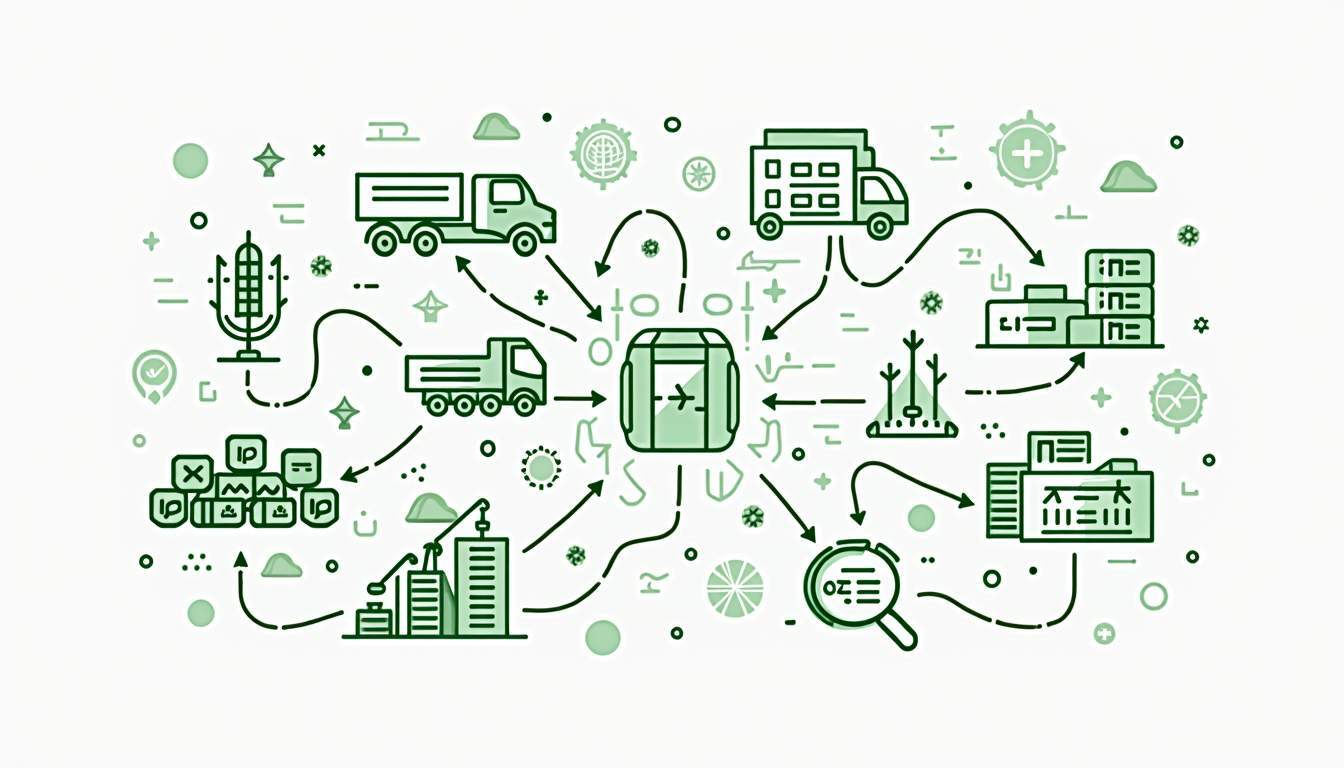Share this
How to Utilize Supply Chain Analytics
by Christie McLeod on Oct. 5, 2021

Choosing the right partner can make or break your company’s logistics, customer service, and repeat purchases. Using a fulfillment center like Shipfusion frees you from navigating the fulfillment landscape with zero stress. Below are some insights on how Shipfusion can take your business to the next level.
The supply chain is one of the crucial building blocks of operational efficiency and effectiveness. It’s the network of activities between a company and its suppliers responsible for producing and delivering goods and services to consumers. Every business looks forward to fulfilling consumers’ orders quickly using cost-efficient logistics.
And to achieve this, you need efficient supply chain management (SCM) strategies to optimize costs, speed, and accuracy. However, SCM strategies can’t work efficiently on their own; they need a backup—the supply chain analytics.
In this article, we’ll look at what supply chain analytics are, how you can improve your supply chain, and the general performance of your business using these analytics.
What Is Supply Chain Analytics?
Supply chain analytics refers to the analysis of information a company draws from activities tied to its supply chain, such as procurement, stock management, order management, transportation (shipping) management, warehouse management, etc.
Types of Supply Chain Analytics
Analyzing supply chain data gives different forms of supply chain analytics that you can use to better the performance of your business. They include:
1. Descriptive Analytics
These analytics revolve around past data or events. By looking at historical data, you can identify patterns which in turn helps identify trends and measure returns on the invested capital.
2. Predictive Analytics
Predictive analytics combines historical information, statistical algorithm, and machine learning (ML) to predict future trends.
These analytics can help you foresee potential disruptions or changes, allowing you to counter challenges by creating a more agile supply chain.
3. Prescriptive Analytics
These analytics are used for decision-making. Prescriptive analytics use loads of data run through selected computer software to help in the decision-making process.
4. Cognitive Analytics
Cognitive analytics aim at hastening the decision-making process. These analytics use machine learning (ML) and artificial intelligence (AI) for human-like reasoning and decision making.
5. Diagnostic Analytics
As their name suggests, diagnostic analytics is more about diagnosis or identifying problems. These analytics analyze the overall performance of your business to understand what errors occur and why they occur.
So, let’s now look at how you can utilize these supply chain analytics.
To Predict the Future Demand
One secret behind a robust supply chain is supply chain forecasting. And you can use supply chain analytics to get a glimpse of future demand, supply, and pricing trends.
By predicting future demand, you get to know how much inventory you need at a particular time or season. This helps you plan your procurement process to fit the needs of your customers. It also allows individual suppliers within your supply chain to prepare in advance for the upcoming demand needs.
Besides, demand forecasting reduces the chances of having stockouts or lots of dead stocks, which can affect the overall profitability of your business in the long run.
Reduces Supply chain risks
Identifying and managing supply chain risks before they occur can go a long way in improving the performance of your business. And one way to achieve this is through supply chain analytics.
Typically, you can get a clear picture of your supply chain patterns and even point out potential risks by utilizing supply chain analytics. Supply chain risks include financial, legal, sociopolitical, and human behavior risks, to mention a few.
Identifying potential risks beforehand helps with supply chain planning such that if anything that’s likely to affect your supply chain occurs, you and your team will be better prepared to respond to it and keep your supply chain afloat.
In addition, having a better understanding of problems within your supply chain and what triggers them will help you identify and address dangerous trends early enough before they graduate into serious issues down the road. It allows you to take action before the problem becomes too big to handle.
Optimize on Your Supply Chain
Supply chain analytics also come in handy when you want to optimize your supply chain. Supply chain optimization revolves around improving the supply network to give clients what they want when they want and where they want it while still making profits from the business,
And with the right data, you can monitor your supply chain performance from the warehouse or fulfillment center up to the time shipping happens. This way, you can point out weak areas that need improvement. You can then come up with the most effective ways to optimize your supply chain based on various factors such as customer service, product quality, cost-effectiveness, etc.
A good mix of improved business processes and the right technology can help you optimize your supply chain effectively within a short period. Here you use Shipfusion, an eCommerce fulfillment solution that handles all the fulfillment needs for your eCommerce business.
Shipfusion integrates with your existing eCommerce channels to handle everything from processing orders to shipping them and managing customer returns.
By constantly optimizing your supply chain, you’ll reduce operational inefficiencies and consequently improve the overall performance of your business.
Achieve More Strategic Management Through Route Planning
Through one of the supply chain software, route planning software, you can plan on the expected delays and figure out ways to handle them. This means you’ll make more timely deliveries which ultimately leads to better customer service.
By utilizing supply chain analytics, supply chain teams can monitor their progress and determine what goals they still need to meet before achieving greatness. This makes the shipping process more efficient and ensures the order fulfillment is fast, thus reducing the shipping costs and maximizing the profits.
Shipfusion makes your order fulfillment easy by offering carrier partnerships at discounted shipping rates throughout North America. This way, you can use your time and resources more efficiently. When using these strategies to achieve greater success in the future, supply chain analytics will help ensure that your company is on track for growth.
While running a business comes with many challenges, it doesn’t mean that you have to do everything yourself. Instead, you should find a flexible and reliable order fulfillment partner like Shipfusion who will offer you a retail fulfillment solution for your business.
Bottom Line
When supply chain analytics are optimally utilized, they can go a long way in improving a business’ operational efficiency and effectiveness.
So, you should constantly utilize your supply chain analytics to predict the future of your business, understand risks, make better decisions and increase your ROI in the long run.
The 4 tips discussed above will help you use your supply chain analytics like a pro!
Shipfusion sets your business on autopilot and combines flexible, reliable fulfillment with powerful, real-time technology. Shipfusion has multiple fulfillment centers across the US and Canada– making it easy to manage your eCommerce business. For more information on how to set your business on autopilot, contact one of our fulfillment specialists today.
Share this
You May Also Like
These Related Articles

Supply Chain Analytics: The Ecommerce Advantage You Can’t Afford to Ignore

How to Decomplexify Demand Management In Supply Chain Planning

15 Supply Chain KPIs Every Ecommerce Business Should Track
- June 2025 (22)
- May 2025 (27)
- April 2025 (27)
- March 2025 (26)
- February 2025 (26)
- January 2025 (35)
- December 2024 (16)
- November 2024 (22)
- October 2024 (22)
- September 2024 (27)
- August 2024 (9)
- July 2024 (8)
- June 2024 (5)
- May 2024 (8)
- April 2024 (8)
- March 2024 (6)
- February 2024 (6)
- January 2024 (5)
- December 2023 (3)
- November 2023 (3)
- October 2023 (5)
- September 2023 (4)
- August 2023 (2)
- July 2023 (1)
- June 2023 (4)
- March 2023 (2)
- October 2022 (1)
- September 2022 (5)
- August 2022 (4)
- July 2022 (7)
- June 2022 (4)
- May 2022 (4)
- April 2022 (6)
- March 2022 (2)
- February 2022 (1)
- January 2022 (3)
- December 2021 (2)
- November 2021 (4)
- October 2021 (2)
- September 2021 (5)
- August 2021 (4)
- July 2021 (4)
- June 2021 (3)
- May 2021 (2)
- April 2021 (3)
- March 2021 (3)
- February 2021 (3)
- January 2021 (2)
- December 2020 (4)
- November 2020 (2)
- October 2020 (4)
- September 2020 (2)
- July 2020 (5)
- June 2020 (4)
- May 2020 (2)
- April 2020 (2)
- March 2020 (4)
- February 2020 (1)
- December 2019 (1)
- May 2018 (1)
- March 2018 (2)
- February 2018 (3)
- January 2018 (3)
- November 2017 (3)
- July 2017 (4)
- March 2017 (3)
- February 2017 (5)
- January 2017 (3)
- December 2016 (4)
- November 2016 (6)
- October 2016 (6)
- October 2015 (1)
- September 2015 (1)
- June 2015 (3)
- May 2015 (3)
- August 2014 (1)
- July 2014 (1)
- March 2014 (1)
- February 2014 (1)